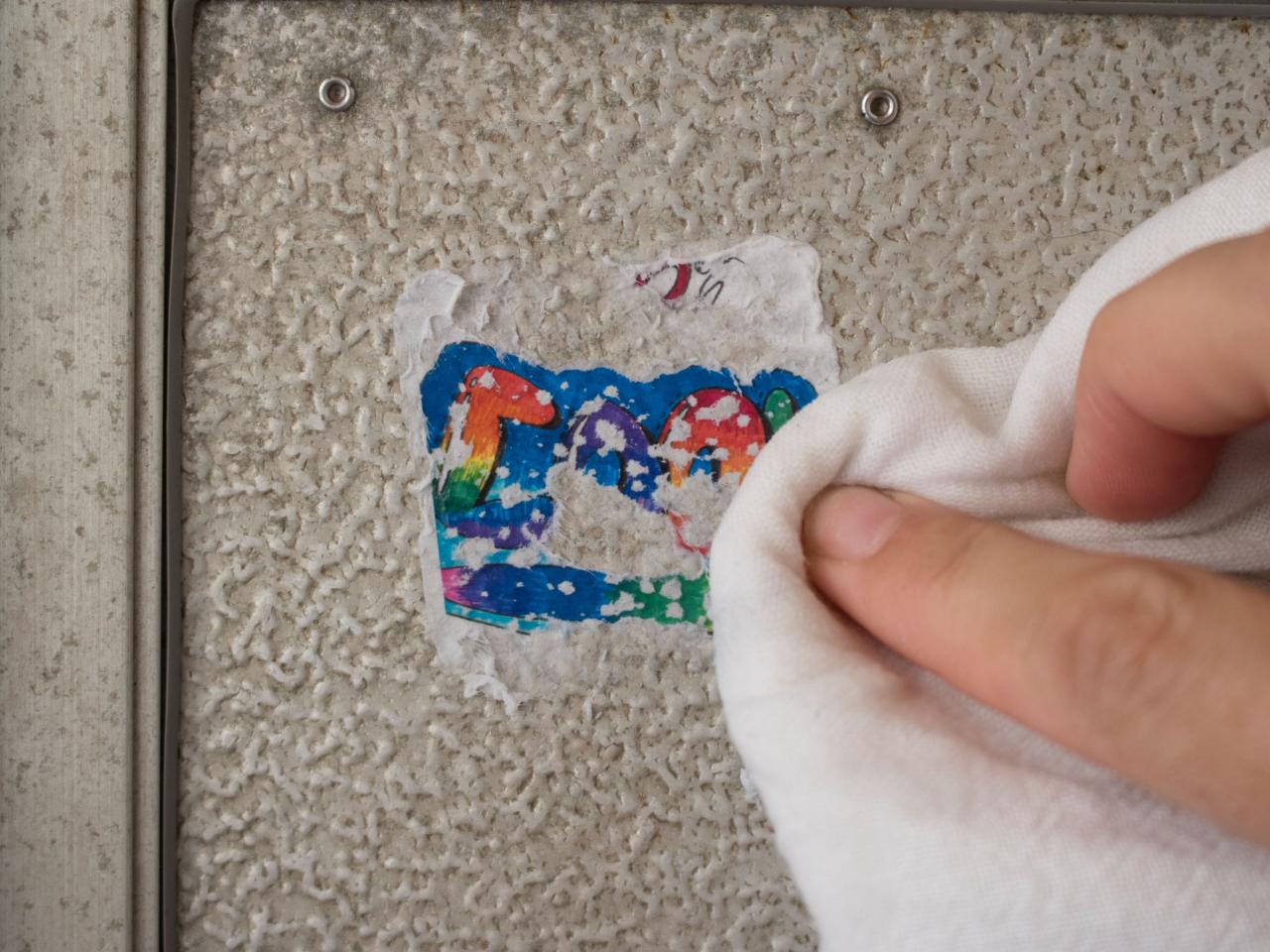Whether on children’s room furniture, the car, the bicycle or on wood and glass: stickers and labels are annoying because they are usually difficult to remove. The following tips can help you remove it.
Remove stickers and adhesive residue with home remedies
Many adhesives can be removed using products you already have at home. These include: heat (hair dryer), water, oil and alcohol. First you can try your luck with a hairdryer. If that doesn’t work, try water before resorting to products containing fat or alcohol.
- Hot-melt adhesives are removed by hot air: The hairdryer is certainly the classic among sticker removers. Many manufacturers of labels and stickers use a hot melt adhesive for their products. This comes off when heated so that the sticker can be removed without leaving any residue. A flat scraper is a helpful tool. But be careful: With plastic, the heat can lead to changes in the surface. So be careful here.
- Many adhesives are water-soluble: An effective and completely harmless home remedy for removing nibble labels is water. Many adhesives are water-soluble and can be easily removed after a water bath, ideally with a little washing-up liquid or detergent added. They often swim on the surface of the water after a while.
- Removing adhesive residue with scotch tape: At least from a plastic surface, ugly adhesive residue can be removed by pressing a strip of scotch tape firmly onto the respective areas and then tearing it off with a jerk. The nasty remnants stick to the scotch tape and are torn off with it.
- Fat and oil-based home remedies: If a fat-soluble adhesive was used for a sticker, home remedies such as margarine, butter or cooking oil can help. Paper labels can simply be spread with margarine or butter. You should let the fat absorb briefly so that it can bond with the adhesive and thus release it. For plastic stickers, liquid cooking oil or orange oil is a better choice. Put some on a rag or sponge and wipe over the surface. Before application, you should loosen the edges of the sticker slightly so that the liquid grease can run behind the adhesive surface and loosen the adhesive. But be careful: Some rubberized plastic coatings cannot be used with oil – you can find out more about this here.
- Alcohol and nail polish remover as a last resort: Only when all other means have failed should you resort to the very tough measures and tackle stubborn stickers with nail polish remover. Spirits and mineral spirits perform the same services. To ensure that the adhesive and solvent can bond well, it is also helpful if you slightly peel off the corners and edges of the sticker before treatment. However, caution is advised when using it. The chemicals can severely damage the surface – this is especially true for plastic coatings and paints.
- Lemon: Lemon or lemon juice is also said to help remove residue from adhesive labels or adhesive tape. To do this, a little acid is dripped onto the area. Then everything should sit for some time and be wiped off with a cloth. However, the trick didn’t work in the t-online test. The acid can also attack rubber coatings and sensitive plastic.
